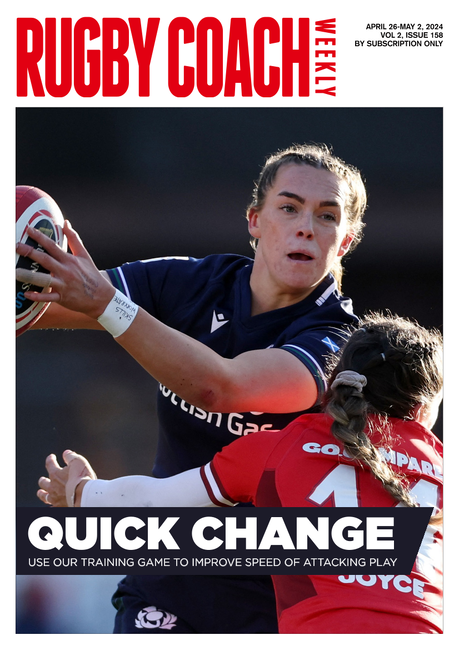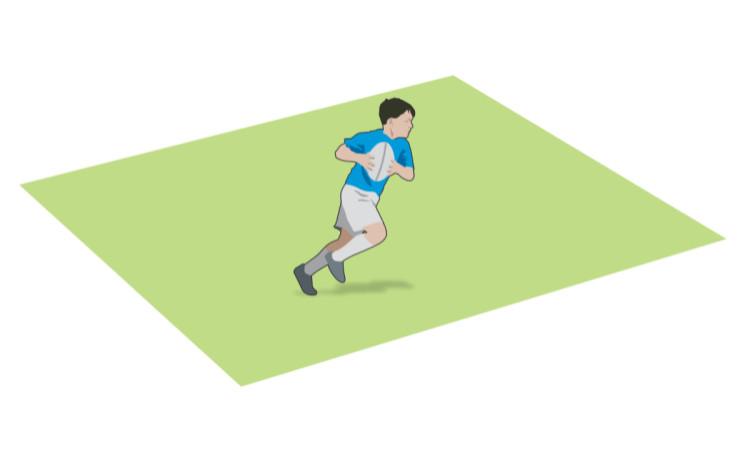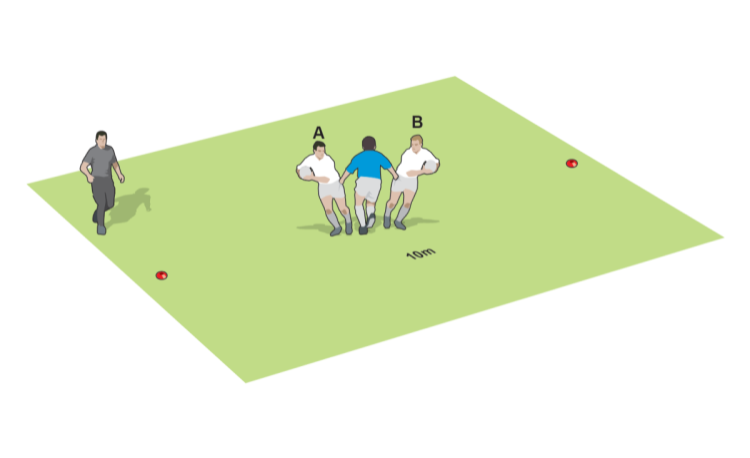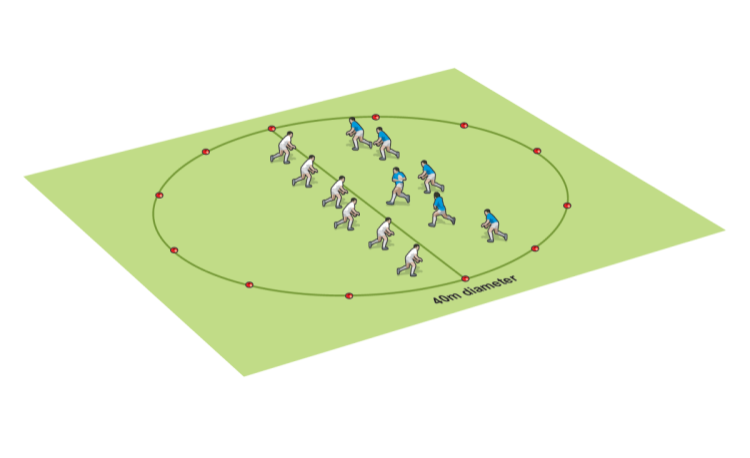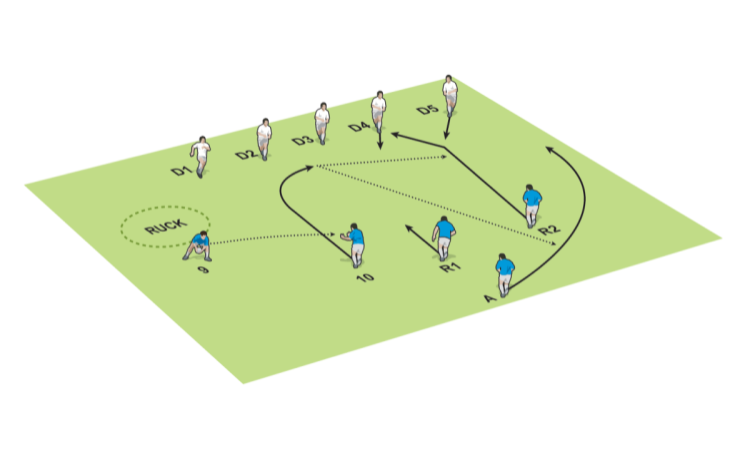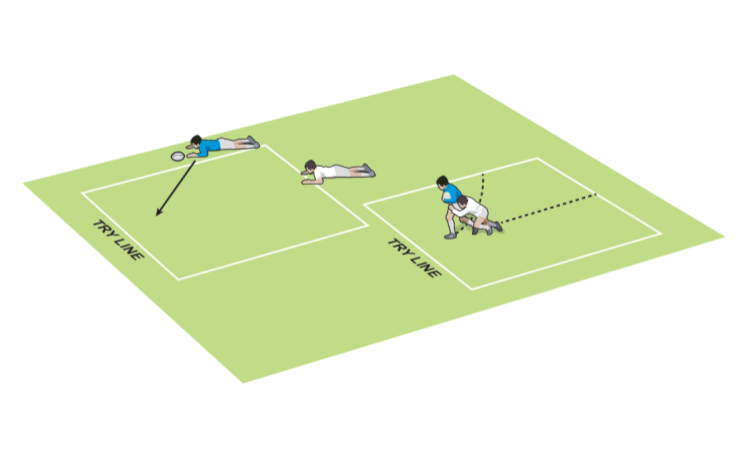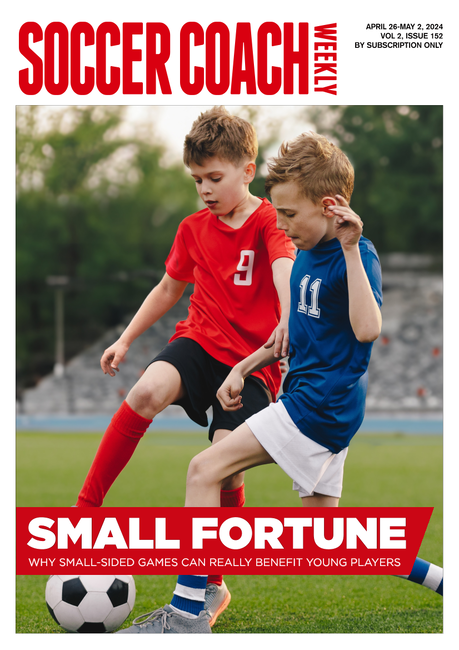You are viewing
1 of your 2 free articles
Rugby drill to prevent players taking the ball standing still
The five main causes of a player taking the ball standing still are:
1. Over eagerness
The support player is so keen to get the ball at pace that he gets too close to the ball carrier. He then ends up receiving the pass either standing still or decelerating.
2. Over cautiousness
The support player is worried that he is not going to get to the ball carrier in time, so he gets too close. He then ends up receiving the pass standing still or decelerating.
3. Poor communication
The support player doesn't communicate exactly where and when he wants the pass. The ball carrier then cannot deliver the pass at the right time.
4. Poor understanding
Either player misunderstands the situation in front of them. This causes a delay in the pass, which usually means the support player overruns.
5. Ball carrier indecision
If the ball carrier suddenly decides to beat the defender rather than give the pass, the support player will find himself arriving too early to receive the "best" pass.
Don't make the players stand deeper
- Don't align your players so deep in attack that the third and fourth receivers are 20 to 30 metres behind the gain line.
- Remember the first principle in attack is to go forward. Being 20 metres behind the gain line puts you at a huge disadvantage.
- You need to demonstrate to your players the importance of depth in attack and how they can create it without starting a long way behind the ball carrier.
A depth 2 v 1 rugby drill
Put the depth principle into a 2 v 1 drill, as set up in the picture.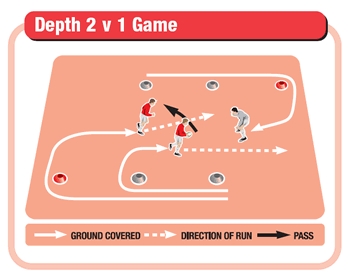
- The ball carrier runs round the first cone and into the box. At the same time the defender runs round a corresponding cone and into the box.
- The support player has to run round the far cone before they can get involved. This forces them to come from deep and at pace.
- Encourage the ball carrier to beat the defender on his own and only use the support player if necessary.
To get soccer coaching drills, games and advice delivered direct to your inbox, click the link to subscribe to Rugby Coach Weekly.
Click the link for footwork drills to boost passing on the run.
Newsletter Sign Up
Coaches Testimonials

Gerald Kearney, Downtown Las Vegas Soccer Club

Paul Butler, Florida, USA

Rick Shields, Springboro, USA

Tony Green, Pierrefonds Titans, Quebec, Canada
Subscribe Today
Be a more effective, more successful rugby coach
In a recent survey 89% of subscribers said Rugby Coach Weekly makes them more confident, 91% said Rugby Coach Weekly makes them a more effective coach and 93% said Rugby Coach Weekly makes them more inspired.
Get Weekly Inspiration
All the latest techniques and approaches
Rugby Coach Weekly offers proven and easy to use rugby drills, coaching sessions, practice plans, small-sided games, warm-ups, training tips and advice.
We've been at the cutting edge of rugby coaching since we launched in 2005, creating resources for the grassroots youth coach, following best practice from around the world and insights from the professional game.


